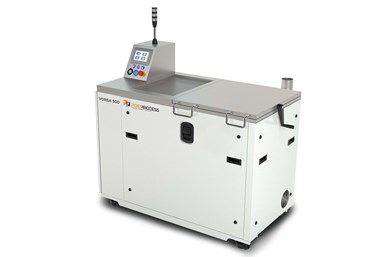PostProcess’ FDM Support Removal Reduces Postprocessing Time
The company says the Vorsa 500 reduces support removal processing times in additive manufacturing by over 50%.
Share
Read Next

The PostProcess Technologies’ Vorsa 500. Photo Credit: PostProcess Technologies
PostProcess Technologies’ Vorsa 500 leverages is designed to provide consistent, hands-free support structure removal on 3D printed FDM parts. This machine is the latest in the company’s lineup of automated, intelligent postprinting solutions for additive manufacturing (AM). It is said the machine offers customers higher throughput with an automated and comprehensive FDM support removal solution.
The company says the VORSA 500 provides the fastest cycle times in the industry, reducing support removal processing times by over 50% compared to submersible tank systems. It is said to have the ability to process larger batch sizes to deliver uniform, high-quality results for every part, regardless of geometry.
The system is enabled by PostProcess’ Automat3D software platform and features volumetric velocity dispersion (VVD) technology which utilizes multidimensional spray coverage to ensure fast cycle times without damage to parts. This solution is also said to enable quick dry times while maintaining part integrity as parts will not become saturated with detergent due to the spray nozzle technology.
With user-friendly software controls, operators have control over key process parameters and the ability to optimize cycles to produce consistent end parts, the company says.
Related Content
-
Seurat: Speed Is How AM Competes Against Machining, Casting, Forging
“We don’t ask for DFAM first,” says CEO. A new Boston-area additive manufacturing factory will deliver high-volume metal part production at unit costs beating conventional processes.
-
3D Printed Lattice for Mars Sample Return Crash Landing: The Cool Parts Show Bonus
NASA Jet Propulsion Laboratory employs laser powder bed fusion additive manufacturing plus chemical etching to create strong, lightweight lattice structures optimized to protect rock samples from Mars during their violent arrival on earth.
-
Why AM Leads to Internal Production for Collins Aerospace (Includes Video)
A new Charlotte-area center will provide additive manufacturing expertise and production capacity for Collins business units based across the country, allowing the company to guard proprietary design and process details that are often part of AM.











